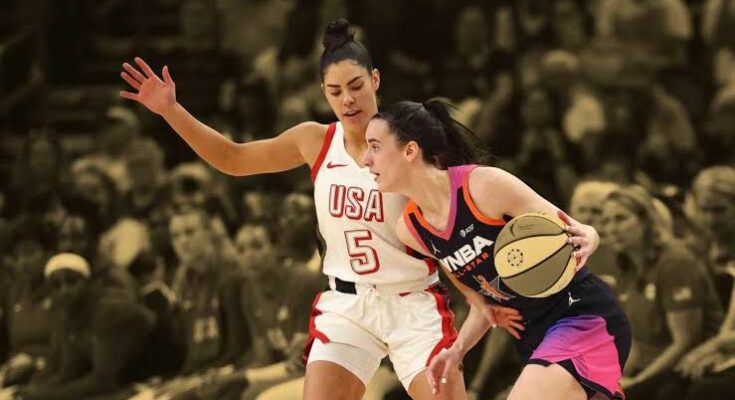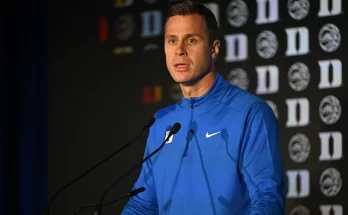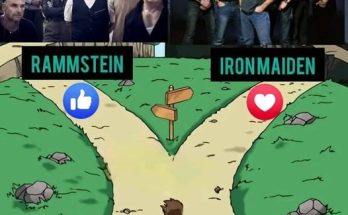The Indiana Fever are in chaos without Caitlin Clark as their offense falters and coaching decisions are made by
The Indiana Fever have arrived at a deeply unsettled crossroads, thrust into chaos by the sudden absence of Caitlin Clark, whose leadership and playmaking have kept the team in rhythms others now struggle to replicate. Their offense, once dynamic and fluid, has faltered; coaching decisions are visibly unsteady, and the team is fraying at the edges. What’s unfolding is not simply a temporary slump—it’s a systemic breakdown that threatens their identity, cohesion, and future.
Without Clark, Indiana’s offense has become unrecognizable. In the first five games she missed, their scoring sank from a league-leading 88 points per game with her to a meager 76.4 points without her—a stunning drop that plunged them from one of the WNBA’s most potent attacks to one of its weakest (SI). Their assist numbers tell a similar story. Clark’s departure sapped them of creativity, dropping their rank from fifth to tenth in assists per game. Without her court vision and passing flair, players are forced into isolation and predictable actions, and the court has felt stagnant.
Fast break energy, once their distinct advantage, has evaporated. Their fast break points per game plunged from 12.3 to just 3.8—worst in the league—after her injury (SI). Instead of pushing the pace, Indiana now seems to lumber. The shift from breakneck speed to lethargy is jarring, and it’s evidence that the coaching staff has failed to adapt. Offensive sets appear unfocused, reactionary, and stale.
Kelsey Mitchell, an elite scorer, is being asked to take command—but she’s shown clear inconsistencies. She’s still capable of exploding for huge nights (29 points against Brooklyn), but her inefficiency is glaring: 4-of-16 in some nights—struggling to find her rhythm amid the new structure (PFSN, New York Post). Mitchell’s talent is undeniable, but she’s not a floor general. She can create her own looks, but passing and pace coordination are glaring gaps.
Aliyah Boston’s talents have become obvious in Clark’s absence. She’s become the backbone of the offense, flourishing with more touches in the paint—ramping up to 17.5 points and seven rebounds over an 11-game stretch (SBNation.com). Her field goal rate stands out at 56.3%, and she’s developed her passing beyond expectation (SBNation.com). But her efficiency is meaningless if she’s not consistently fed the ball. In many games, Boston was held to only five attempts, despite her ability to carry them (Ink on Indy). The offense’s inability to revolve around her post is a failure in design and execution.
These failures echo in losses to the Mystics (83–77) and Sparks (85–75): In both games, Indiana led at times but wilted late. Washington exploited poor spacing, collected 48 points in the paint, and harassed the Fever into turnover and foul trouble (Reddit, ESPN.com). Against the Sparks, Boston was easy to spot in the post, but the ball rarely arrived cleanly or decisively (Ink on Indy).
These struggles haven’t gone unnoticed by players. Sophie Cunningham called the first game a “gut punch” without Clark (ClutchPoints). Kelsey Mitchell echoed similar sentiments, pointing out the team’s lack of sharpness (ESPN.com). These are not typical shake-it-off quotes—they reveal vulnerability, frustration, and desperation.
Is the roster to blame? Certainly, depth and skill limitations surface in the cold light of loss. But many of the issues stem from coaching. Witness the confusion on where to place players, spacing breakdowns, and predictable half-court stagnation. Reddit users have been pointing to the coaching staff as drivers of this malaise (Reddit, Reddit). Their retort: Indiana is trying to run half-court sets without the personnel or skill-level adaptation required. Players are confused, static, and often in the wrong spots. Too many times, they revert to hero ball instead of flowing into well-constructed motions (SBNation.com, Reddit).
Some fans are already calling the season over without Clark. After a loss to Los Angeles, one tweeted, “Indiana’s season is toast without CC” (Sportskeeda). Agreed, her injury is more than a temporary set-back—it’s exposed how shallow their offensive identity is without her.
Injuries have compounded things. Clark’s groin issues date back to mid-July and have become recurring. She’s missed the All-Star weekend and, by late July, two games in Brooklyn alone—no return date is set (The Sun). This situation demands longer-term strategy—yet the Fever are still chasing wounded form, without a clear contingency plan.
So far, Indiana has made minor adjustments: turning to veteran Sydney Colson at point, pushing Mitchell to be more aggressive, and trying to free up Boston (SI, PFSN). But these tweaks haven’t fixed the rot. Colson started five games in Clark’s place but managed only 3 assists per outing and balanced them with nearly as many miscues (SI, ESPN.com). She’s no orchestrator, and the strategy has relied too heavily on veterans playing out of role.
To emerge from this slump, Indiana needs more than scattershot readjustments. It needs structure, identity, and surviving strategy. Here’s what must change:
First, commit to Boston as the fulcrum. She’s proven that if given the ball, she produces. Running sets, short-rolls, and post entries should be built around her—consistently and deliberately—so that defenses can’t ignore her. Otherwise, it’s wasted talent.
Second, run aggression-based perimeter playbooks. Mitchell should be unleashed in pick-and-rolls and on the move; handoffs should be aggressive, and floor spacing dynamic. Let her collapse defenses and either finish or dish.
Third, install a turnover-resilient offense. That means cutting options: use off-ball cuts, flare screens, and simplified reads. Plot passes to cutters and strong-side rotations. A staggered screen on top of three-point shooters—players like Cunningham or Laurin—might ignite ball movement and spacing.
Fourth, simplify the pace. If fast breaks aren’t coming naturally, then commit to fewer possessions with more purpose: clear rebounding decisions, sprinting back to transition defense, and then flowing into a push motion that resets into an organization. Too often without Clark, they dump into a static half-court dunker space, forcing isolation plays that crumble.
Fifth, improve conditioning and rebounding. Even games lost in the first half reflect fatigue: letting in 48 paint points or 12 offensive rebounds is unacceptable. White has pointed to sloppiness and lack of detail, but practice should reflect ironed discipline—half-court slides, rebounding drills, communication, navigation without the ball.
Sixth, embrace alternatives. When Clark returns—eventually—they can deepen their systems. For now, build around a dual core: Mitchell attacking, Boston dominating, and a guiding point guard like Colson or potentially someone new in free agency or trade. Move away from a single-star system that crumbles without her.
But adaptation demands visible leadership from the coaching staff, something the Reddit universe has noted is missing (PFSN). Fans say half-court offense is abysmal, and the bench doesn’t inspire. Indiana needs an offensive coordinator with vision, someone who can mold motion into purpose, not just fill slots. It needs pace with meaning, movement with structure, discipline with expansion.
There are glimmers. Boston has taken the mantle admirably (SBNation.com). Mitchell can erupt on offense. Rookie or bench pieces—Cunningham, Colson, Hull—should relish clear roles. The defense, with veterans Howard, Bonner (before departure), Dantas, has teeth; it can anchor games if allowed time and clarity.
The front office needs to act, too. They pumped resources into new ownership, new practice facilities, coaching hires, and sold tickets at record prices (Wikipedia). But all this means nothing if systemic failures remain unchecked. This is a playoff-contending roster when healthy; now the foundational cracks must be addressed.
Clark’s absence is the catalyst, but the rot is structural. They’re not unlovable—they have talent. The problem lies in identity. Is this a motion offense team? A pace-and-space squad built around perimeter shooting? A post-and-roll powerhouse? They’ve tried all without mastering any. And that manifests as chaos—we see it in inconsistent spacing, failed entries, bench passivity, and late-game trap-induced turnovers.
The season isn’t over while they’re above .500 and within striking range of a playoff seed. But long term, they could become the cautionary tale of dependence. The WNBA thrives on stars, but balance win championships. Clark is a unicorn—but supporting cast and coaching infrastructure must combine and compensate.
So long as they remain the “Caitlin Clark team,” then when she is absent, so is their identity. Nor can they ride a PR wave built around her hype and marketability (Straight Arrow News). The league grew around her arrival. Now, will the Fever grow beyond her presence?
Rebuilding without her isn’t just a fallback plan—it’s imperative. System needs tune-up, roles need clarity, habits need hardness, and coaching needs courage. It requires leaning into Boston’s ascendancy, unleashing Mitchell’s drive, simplifying pace, cutting turnovers, installing cutter flow, cleaning rebounding, owning defensive sets and, above all, rediscovering purpose.
This season is at risk unless Indiana stops treating Clark as the entire offense, and starts constructing an enduring system. Without that, they’ll continue stumbling in her absence, falling on coaching improvisation instead of strategic design.
Their future hinges on this moment. Will they refine, rededicate, and rebuild? Or will they dissolve into the chaos laid bare by injury? The pieces are present—veteran mentality, talent, bright coaching promise. But only transformation now will salvage not just this season, but the foundation for success, whether with or without their superstar. The Fever need clarity, identity, and disciplined execution—the antidote to the chaos they’ve become.



